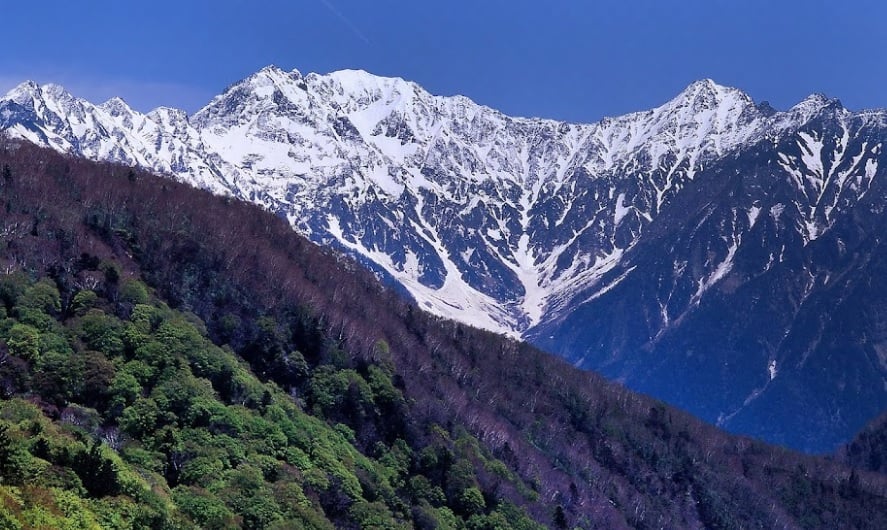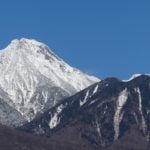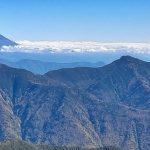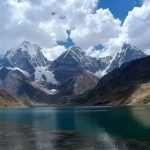Okuhotaka Mountain: Japan’s 3rd Highest Peak
Okuhotaka Mountain proudly stands in Japan’s Southern Alps, reaching an impressive elevation of 3,190 meters and holding the distinction of being the country’s third-highest peak. A magnet for nature enthusiasts, Okuhotaka offers challenging climbing routes, breathtaking valleys, and captivating vistas. The foothills bloom with vibrant flowers in spring, feature crystalline lakes during the summer months, and transform into a canvas of golden hues in the fall. Not only a haven for mountaineers, but Okuhotaka Mountain also captivates the interest of nature researchers with its rich biological diversity. With its ever-changing beauty and challenging ascent routes, Okuhotaka Mountain stands as a natural marvel, beckoning adventurers and scientists alike to explore its wonders. Okuhotaka Mountain: Japan’s 3rd Highest Peak :
Where is Mount Okuhotaka ?
Mount Okuhotaka is located in Japan, specifically in the Southern Alps (Minami Alps), which is a mountain range in the central part of Honshu, the main island of Japan. The Southern Alps extend across several prefectures, including Nagano, Yamanashi, and Shizuoka. Mount Okuhotaka is part of this mountainous region and is known for its impressive elevation and natural beauty.
How to Go to Mount Okuhotaka?
Access Point: Kamikochi
Kamikochi is the starting point for many treks to the Japanese Alps, including Mount Okuhotaka. Access to Kamikochi is restricted to private vehicles, so visitors typically use public transportation.
From Tokyo or Osaka to Matsumoto:
Take a train from Tokyo or Osaka to Matsumoto. The most common route is using the JR Limited Express Shinano from Nagano or Nagoya.
From Matsumoto to Kamikochi:
From Matsumoto, take a bus to Hirayu Onsen, which is a hot spring town.
Transfer to another bus from Hirayu Onsen to Kamikochi.
Kamikochi to Mount Okuhotaka:
Once in Kamikochi, you can start your trek to Mount Okuhotaka. The trek involves several mountain huts along the way, and it’s advisable to check the current conditions and availability of accommodation in advance.
Climbing Route to Mount Okuhotaka:
The climb to Mount Okuhotaka may require technical climbing skills, and it’s recommended for experienced hikers or mountaineers. The most common route is the “Nishihotakadake Course.”
Accommodation:
There are mountain huts along the trekking route where you can stay overnight. It’s essential to check availability and make reservations, especially during the climbing season.
Climbing Season:
The climbing season for Mount Okuhotaka is typically from early summer to early autumn. Outside this period, the weather can be harsh, and climbing conditions may not be ideal.
Permits:
Depending on your chosen route, you may need permits to climb Mount Okuhotaka. Check with the relevant authorities in advance.
How Many Meters is The Height of Okuhotaka?
Mount Okuhotaka, also known as Okuhotaka-dake, has an elevation of approximately 3,190 meters (10,466 feet) above sea level.
What to do on this Mount Okuhotaka ?
Mountain Climbing:
Mount Okuhotaka is a popular destination for experienced climbers. The ascent may involve technical climbing, so make sure to be adequately prepared, and consider hiring a guide if you’re not an experienced mountaineer.
Trekking and Hiking:
The region around Mount Okuhotaka provides stunning trekking routes. Kamikochi, the starting point for many treks, offers various trails with beautiful landscapes. The Nishihotakadake Course is a common route leading to the summit.
Enjoying Nature:
Take in the breathtaking natural scenery. The Japanese Alps offer picturesque landscapes with alpine meadows, crystal-clear streams, and panoramic views. Be sure to bring a camera to capture the beauty of the surroundings.
Photography:
Capture the beauty of the surrounding landscapes. Whether you’re interested in landscapes, flora, or fauna, Mount Okuhotaka and its surroundings provide ample opportunities for photography.
Wildlife Watching:
The area is home to various wildlife. Keep an eye out for native species such as Japanese macaques, deer, and a variety of bird species.
Camping:
If you enjoy camping, some areas around Mount Okuhotaka may allow camping. Check the local regulations and make sure to follow Leave No Trace principles to minimize your impact on the environment.
Hot Springs:
After a challenging trek or climb, relax in the nearby hot springs. Hirayu Onsen, which is a hot spring town, is one of the places you might visit for a soothing soak.
Staying in Mountain Huts:
Consider staying in one of the mountain huts along your trek or climb. It’s a unique experience and can provide shelter and basic amenities during your journey.
Mount Kitadake : The Second Highest Mountain in Japan
Google Photos and Maps “Okuhotaka Mountain: Japan’s 3rd Highest Peak”





